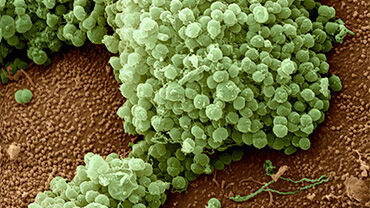Antimicrobial resistance in gonorrhoea: Rising threat to treatment efficacy
The European Centre for Disease Prevention and Control (ECDC) has published a report today highlighting the threat of increasing antimicrobial resistance (AMR) in Neisseria gonorrhoeae. This worrying trend, indicated by surveillance data, underscores the critical need for continued monitoring to inform treatment guidelines and control measures, and for ensuring the prudent use of antimicrobials, against the backdrop of increasing cases of gonorrhoea in Europe.
Data from the Gonococcal Antimicrobial Susceptibility Surveillance in the European Union/European Economic Area for 2022 shows two isolates resistant to ceftriaxone – the recommended antibiotic for treating gonorrhoea. These strains also displayed extensive drug resistance (XDR) and multidrug resistance (MDR), further limiting treatment options.
In 2022, 4 396 isolates from patients diagnosed with gonorrhoea were submitted by 23 European countries to the European Gonococcal Antimicrobial Surveillance Programme (Euro-GASP). The proportion of isolates resistant to azithromycin increased significantly to 25.6%, compared to 14.2% in 2021. Azithromycin is often used with ceftriaxone to treat gonorrhoea, making this finding particularly concerning. Resistance to ciprofloxacin also increased, with 65.9% of isolates exhibiting resistance in 2022, up from 62.8% in 2021. While resistance to cefixime remains low at 0.3%, continued monitoring is crucial, particularly as gonococcal strains resistant to cefixime and ceftriaxone are spreading internationally.
A total of 70 881 confirmed cases of gonorrhoea were reported in 28 EU/EEA countries in 2022, representing a 48% increase over 2021. The notification rate for the EU/EEA in 2022 is the highest recorded since European surveillance of sexually transmitted infections began in 2009.
While most gonorrhoea infections in the EU/EEA remain treatable with currently recommended antibiotics, the rising trends in resistance are of concern and call for heightened vigilance. The increase in resistant strains can compromise the effectiveness of existing treatment options, posing a significant public health challenge until new therapeutic options are available. To address these concerns, ECDC recommends enhanced surveillance, continued and expanded quality-assured antimicrobial susceptibility surveillance to detect and monitor resistance patterns promptly, and regularly reviewing and updating treatment guidelines based on the latest surveillance data on antimicrobial resistance to ensure the most effective therapeutic options are available.
Investing in developing new antimicrobial treatments and alternative regimens is vital to stay ahead of evolving resistance. ECDC also recommends strengthening public health initiatives aimed at preventing the spread of gonorrhoea, including increased access to diagnostic services, as well as fostering international cooperation to help monitor and control the spread of resistant strains across borders.
ECDC stresses the importance of prevention in curbing the spread of gonorrhoea and mitigating the risk of AMR. Promoting safer sexual practices including consistent and correct condom use during vaginal, anal and oral sex is crucial in reducing transmission. Testing for sexually transmitted infections and early treatment is also paramount. Additionally, the prudent use of antimicrobials is essential to slow the development and spread of resistant strains. This includes adhering to recommended treatment guidelines, avoiding unnecessary antibiotic use, completing the full course of prescribed antibiotics and advising patients to come back for tests to ensure they have been cured.
Read the report
Gonococcal antimicrobial susceptibility surveillance in the EU/ EEA
The surveillance of Neisseria gonorrhoeae antimicrobial susceptibility in the EU/EEA is essential for detecting emerging and increasing antimicrobial resistance. Since 2009, this surveillance has been co-ordinated by the European Centre for Disease Prevention and Control (ECDC).







